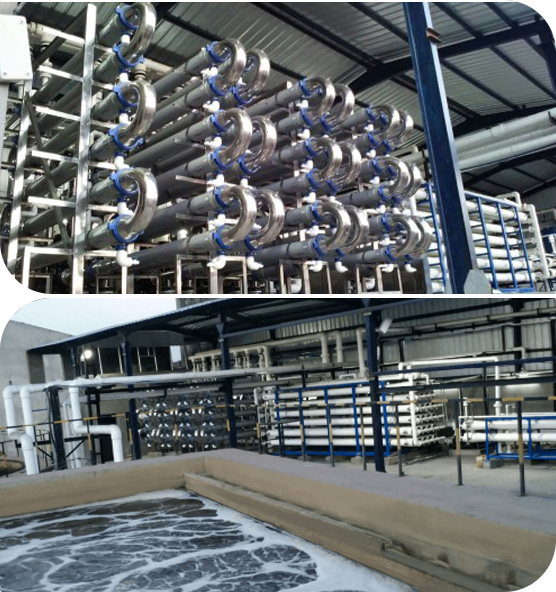
Waterman Engineers Australia is one of the major suppliers of Zero Liquid Discharge procedure. A ZLD procedure is really a remedy method that's utilised to get rid of each of the liquid waste from the procedure. The objective of ZLD water treatment is to lower wastewater economically and develop potable drinking water which is suit for regular use. Zero discharge system is a complicated remedy technique that comprises ultrafiltration, reverse osmosis, evaporation and fractional electro deionization. And we've been a properly-identified provider of ZLD programs.
In many Industries, for instance electricity, oil & gas, chemical compounds, mining and Other people, a great deal of wastewater is generated that needs to be managed. Conventionally, this discharge of wastewater is done by means of a plant outfall to a floor h2o human body like an evaporation pond, or in some cases deep properly injected. These practices cause lots of environmental considerations by the general public in many regions of the earth, as h2o is actually a scarce supply and its administration ought to be monitored. These worries have resulted during the institution of ZLD procedures by numerous industries to minimize their environmental footprint and enrich sustainability. And, Waterman Engineers Australia are best ZLD suppliers you could find for This technique.
Attributes OF ZERO LIQUID DISCHARGE SYSTEM
The Qualities of a Zero Liquid Discharge program could vary depending on the particular design and style and know-how made use of. Having said that, some common properties of ZLD systems consist of:
Water Conservation: One of the primary targets of ZLD units should be to preserve drinking water by minimizing the discharge of liquid squander in the setting.
Substantial Water Purity: ZLD systems are designed to deliver significant-good quality water that is free from impurities and contaminants, that makes them ideal for use in several industrial processes.
Flexibility: ZLD programs are frequently designed to support a broad choice of input liquid streams, that makes them flexible and well suited for use in numerous industries.
Advanced Wastewater Cure: Zero liquid discharge techniques use Highly developed wastewater treatment method methods to take away impurities and contaminants from the effluent, making high-good quality h2o.
Waste Reduction: ZLD programs assistance decrease squander by lessening the volume of liquid waste that needs to be disposed of and by manufacturing a concentrated, strong waste content which might be safely disposed of.
Vitality Effectiveness: ZLD units can be Vitality-intensive due to superior Zld System Manufacturer Zero Liquid Discharge System Power needs of evaporation together with other wastewater procedure procedures. Having said that, advances in technologies are producing Zero liquid discharge techniques far more Strength-productive and value-successful.
Waterman Engineers Australia manufactures Zero Liquid Discharge (ZLD) techniques created to eliminate all liquid waste, aiming to generate potable h2o and limit environmental affect. Their ZLD techniques normally consist of ultrafiltration, reverse osmosis, evaporation, and fractional electro deionization. Important systems utilised are Falling Movie Brine Concentrators, Pressured Circulation Crystallizer, and Other people, with a two-move strategy of pre-concentration and evaporation/crystallization to Get well and reuse water. These systems are adaptable to unique industries, emphasizing water conservation, superior drinking water purity, squander reduction, and Strength efficiency. Complex specifications are diversified and customizable, taking into consideration factors like drinking water resource, circulation rate, and feed drinking water quality.
The need for Zero Liquid Discharge (ZLD) devices arises through the requirement to address environmental problems associated with drinking water scarcity and air pollution. In industries like energy, oil & gasoline, and mining, broad amounts of wastewater are generated. Ordinarily, this wastewater is discharged into bodies of h2o, leading to pollution and depleting clean up h2o sources. ZLD programs purpose to attenuate these impacts by treating and recycling wastewater inside of the commercial course of action, thus conserving h2o, decreasing waste, and marketing sustainability.
When it comes to the complex technical specs of the Zero Liquid Discharge (ZLD) procedure, important elements to give attention to incorporate the drinking water supply it is going to take care of, the process's stream amount, the standard of feed drinking water, the phases of remedy concerned, the recovery level of h2o, procedures for focus disposal, resources of building, operating circumstances, and system automation and control. These things make sure the program's usefulness, durability, and performance in treating and recycling industrial wastewater.
Zero Liquid Discharge (ZLD) crops present Positive aspects including h2o conservation, waste reduction, and air pollution avoidance, contributing to environmental sustainability. They're relevant in industries like energy technology, oil and gasoline, chemicals, and mining, wherever they help in taking care of industrial wastewater properly, decreasing the ecological footprint, and complying with demanding environmental laws. These units are critical in areas experiencing water scarcity and for industries aiming to boost their sustainability and operational performance.
FAQs for any Zero Liquid Discharge (ZLD) procedure usually handle its operational principles, Value-success, upkeep necessities, environmental influence, applicability across several industries, and regulatory compliance. These concerns support buyers comprehend the technique's Gains, technical needs, and suitability for their distinct wastewater administration requires.
one. Zero Liquid Discharge (ZLD) is a wastewater remedy approach built to reduce all liquid squander.
two. The procedure's factors are affected by the precise industrial process, wastewater composition, and regulatory requirements.
3. Effluent treatment crops remove pollutants from textile effluents to prevent environmental contamination.
four. Pros involve h2o conservation, air pollution reduction, and regulatory compliance.
5. The objective is to minimize environmental impact by recycling h2o and cutting down waste.
6-nine. Effluent cure vegetation are stages in wastewater treatment: Most important (Bodily separation), secondary (biological treatment), and tertiary (advanced procedure).
10. Device functions contain filtration, sedimentation, Organic cure, and disinfection.
11. Restricting parameters are aspects that impact the remedy's efficiency, like pH and contaminant concentration.
12. Style considerations contain stream rate, effluent composition, and preferred high-quality of taken care of drinking water.